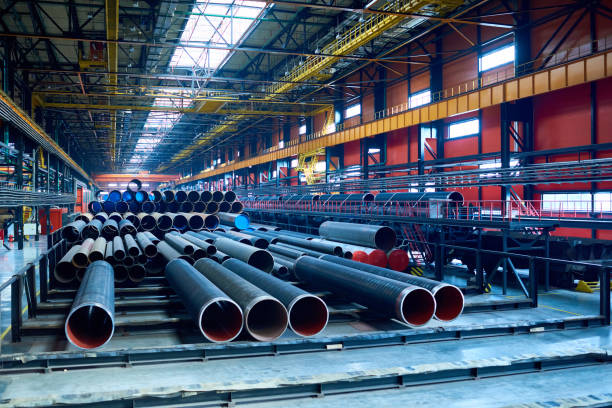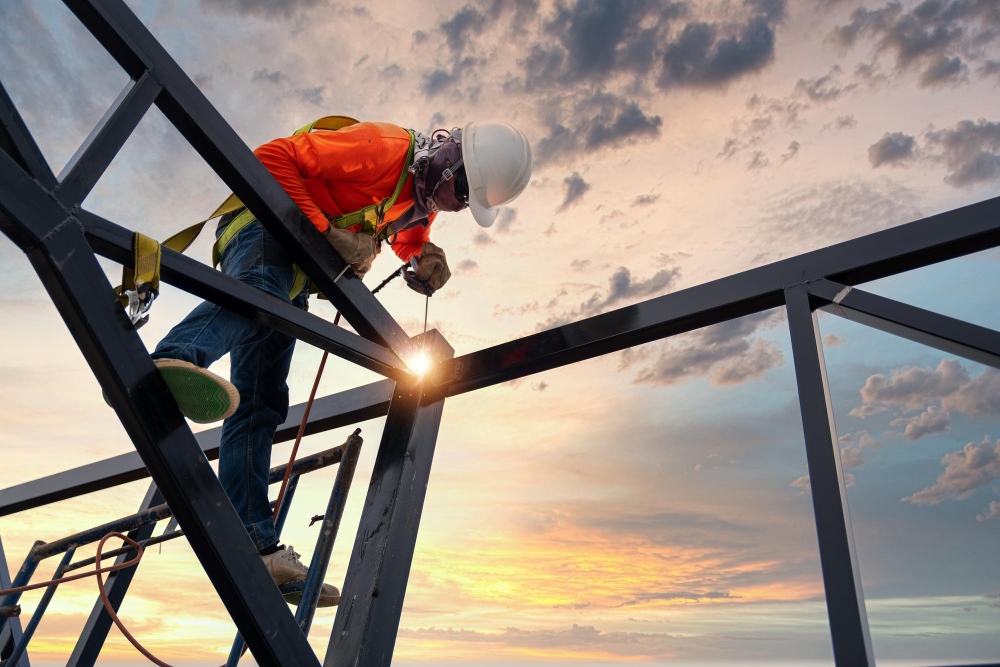Steel Fabrication Melbourne: Workmanship Satisfies Technology
Steel Fabrication Melbourne: Workmanship Satisfies Technology
Blog Article
Ingenious Fads in Steel Construction: Enhancing Durability and Precision
In the realm of steel fabrication, the search of sturdiness and accuracy has led to a wave of cutting-edge fads that are improving the industry. These trends are not simply shaping the existing but also laying the groundwork for the future of steel manufacture, assuring more enhancements in durability and precision.
Advanced Welding Technologies
In the world of steel fabrication, the fostering of advanced welding innovations has significantly changed the market's technique to accomplishing superior top quality and precision in structural welds. Advanced welding modern technologies, such as laser light beam welding and friction stir welding, have actually emerged as game-changers in the field. By leveraging these sophisticated welding techniques, steel makers can boost the durability, toughness, and precision of their architectural welds, meeting the progressively demanding needs of modern-day building and construction projects.
Robot Automation in Fabrication
Embracing robotic automation has come to be a foundation of modern steel manufacture practices, enhancing processes and enhancing performance throughout the sector. Robotics are changing the method steel elements are manufactured, supplying unparalleled precision and rate while lowering human mistake. These automated systems can handle repetitive jobs with consistent precision, leading to higher quality final product.
One secret advantage of robotic automation in steel construction is the capacity to function around the clock without fatigue, significantly increasing production result. This constant operation reduces downtime and accelerates task timelines, eventually saving prices for producers. Furthermore, robots can be set to perform elaborate tasks that might be difficult or harmful for human workers, boosting safety in the office.
In addition, robot automation makes it possible for seamless assimilation with other digital innovations, such as computer-aided style (CAD) software program and Net of Points (IoT) systems (steel fixing). This interconnected strategy boosts communication between various phases of manufacture, enhancing operations and ensuring real-time monitoring and control. As the steel construction sector continues to progress, robotic automation sticks out as a transformative force driving efficiency and precision in producing processes

High-Strength Alloy Development
The development of high-strength alloy development in steel fabrication is reshaping the sector's approach to improving material resilience and performance. High-strength alloys are engineered to show premium mechanical residential or commercial properties, such as enhanced tensile stamina, sturdiness, and rust resistance compared to traditional steel grades. By integrating these sophisticated alloys right into manufacture processes, suppliers can create components that hold up against higher stress and anxiety levels and harsh environments, bring about more sturdy and reliable output.
One trick benefit of high-strength alloy growth is the capability to lower material density without jeopardizing architectural stability. This not only leads to lighter-weight parts yet also adds to set you back savings and boosted performance in manufacture and assembly procedures. Moreover, the enhanced strength-to-weight proportion of these alloys permits the style and building of frameworks with higher load-bearing capacities while lessening overall weight.
3D Modeling and Simulation Software Application
Advancements in steel fabrication processes have actually been dramatically driven by the integration of cutting-edge 3D modeling and simulation software application devices. These tools permit makers to create official website in-depth digital models of their tasks, enabling them to envision the end product with accuracy before any kind of physical work begins. By simulating numerous stress and anxiety aspects, environmental conditions, and structural lots, fabricators can click to read maximize designs for enhanced sturdiness and efficiency. Additionally, 3D modeling and simulation software program streamline the production process by determining possible concerns early, lowering the requirement for costly rework and decreasing material waste.

Lasting Practices in Steel Manufacturing
Incorporating sustainable methods into steel manufacturing procedures is essential for minimizing ecological effect and making certain lasting resource availability. One key sustainable technique is the adoption of energy-efficient innovations to minimize greenhouse gas discharges during the steel production process. This includes utilizing renewable resource sources, such as solar or wind power, to power steel plants and executing energy-efficient devices to maximize power use.
One more critical facet of sustainable steel manufacturing is the responsible sourcing of basic materials. This involves ensuring that the iron ore and other resources made use of in steelmaking are acquired from environmentally pleasant and ethical sources. By advertising openness in the supply chain and sticking to stringent ecological requirements, steel producers can minimize the unfavorable impacts of get redirected here source extraction on neighborhood communities and neighborhoods.

Conclusion
To conclude, the cutting-edge fads in steel construction such as sophisticated welding modern technologies, robotic automation, high-strength alloy advancement, 3D modeling and simulation software program, and lasting practices are enhancing the durability and accuracy of steel products. These developments are changing the steel manufacture market by enhancing sustainability, high quality, and effectiveness. It is clear that the future of steel fabrication depends on accepting these advanced modern technologies to meet the needs of modern-day construction and production markets.
In the realm of steel fabrication, the quest of toughness and precision has led to a wave of ingenious fads that are improving the sector.In the realm of steel manufacture, the adoption of cutting-edge welding innovations has dramatically transformed the sector's technique to achieving premium top quality and accuracy in structural welds. As the steel manufacture sector continues to progress, robotic automation stands out as a transformative pressure driving effectiveness and precision in making procedures.
Furthermore, recycling and reusing steel scrap and waste products play a considerable function in improving the sustainability of steel production. metal fabrication melbourne.In verdict, the cutting-edge fads in steel manufacture such as sophisticated welding modern technologies, robotic automation, high-strength alloy development, 3D modeling and simulation software application, and sustainable practices are enhancing the resilience and precision of steel items
Report this page